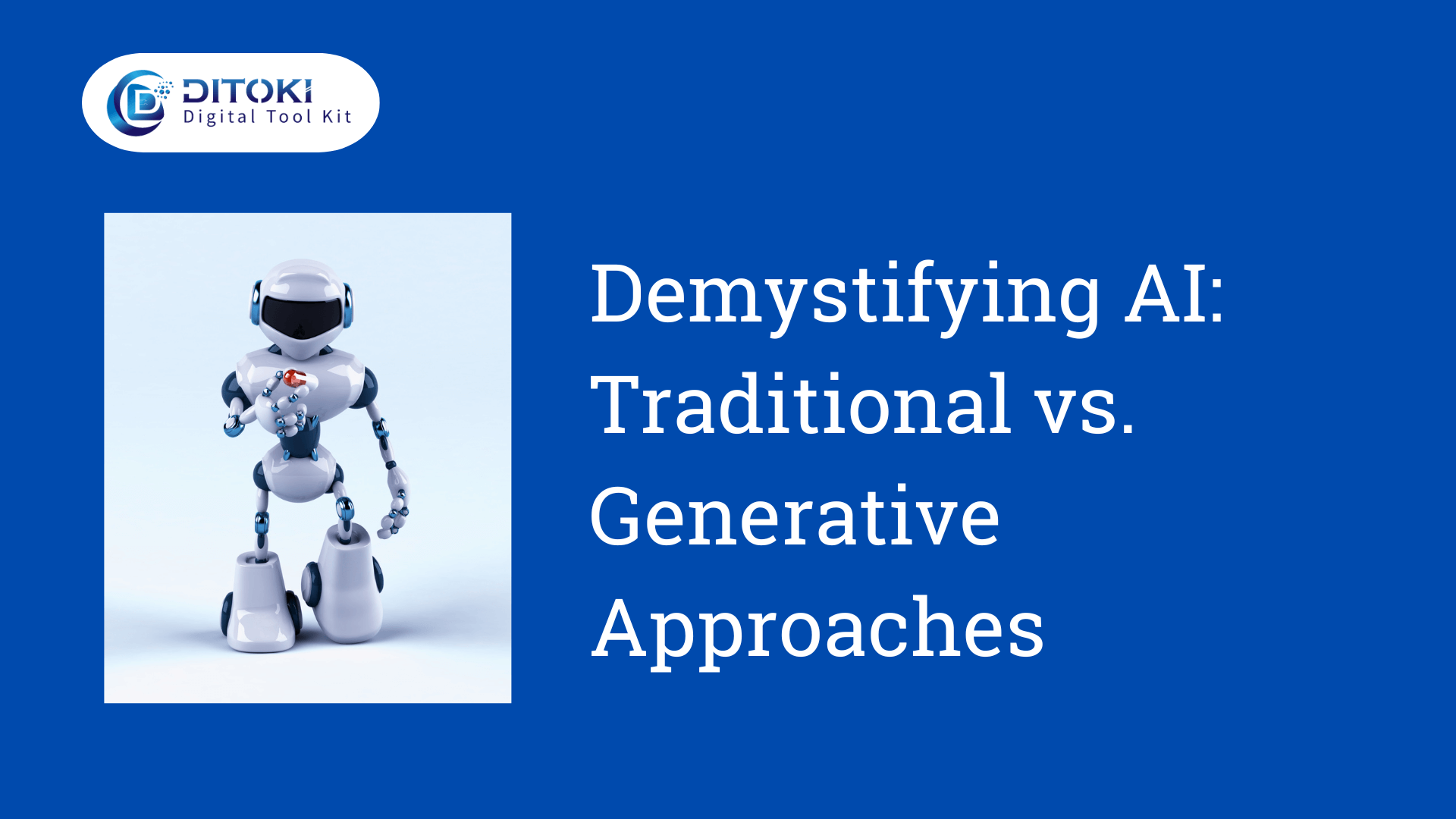Artificial intelligence (AI) has become a ubiquitous term, woven into the fabric of our daily lives. From the recommendation engines on your favorite shopping website to the spam filters guarding your inbox, AI plays a significant role in shaping our digital experiences. But within the vast realm of AI exist two distinct approaches: Traditional AI and Generative AI. Understanding their differences is crucial to grasping the full potential of this transformative technology.
Traditional AI: The Power of Logic and Rules
Traditional AI, also known as Symbolic AI, operates on the foundation of well-defined rules and logic. Imagine a highly skilled chess player who can analyze the board, evaluate potential moves, and choose the one with the highest probability of success. Traditional AI functions similarly. Here’s a deeper dive into its characteristics:
- Rule-Based Approach: Traditional AI excels in tasks with clearly defined rules and procedures. Programmers meticulously hand-code these rules, enabling the AI to perform specific actions based on the input it receives.
- Supervised Learning: Training a traditional AI system involves supervised learning. This means feeding the AI vast amounts of labeled data, where each data point has a corresponding outcome or category. By analyzing these examples, the AI learns the underlying patterns and relationships, allowing it to make predictions on new, unseen data.
- Deterministic Output: Given the same input, a traditional AI will consistently produce the same output. This predictability makes them ideal for tasks like spam filtering, where consistent and reliable decisions are paramount.
- Limited Creativity: Traditional AI struggles with tasks requiring creativity or adaptation. Their performance heavily relies on the quality and comprehensiveness of the training data. Unexpected situations or novel problems can leave them stumped.
Think of a tax filing software. Traditional AI algorithms analyze your income statements, deductions, and tax laws to calculate your tax liability efficiently. Here, the rules and regulations governing tax filing are well-defined, making traditional AI a perfect fit.
Generative AI: Unlocking the Power of Creation
Generative AI marks a paradigm shift in the world of AI. Unlike its rule-based counterpart, Generative AI focuses on creating entirely new data, pushing the boundaries of what AI can achieve.
- Data-Driven Learning: Generative AI often utilizes unsupervised learning techniques. This involves analyzing massive datasets of unlabeled data, where the data points lack predefined categories. The AI sifts through these vast amounts of information, identifying patterns and relationships on its own.
- Generating New Content: The defining characteristic of Generative AI is its ability to create novel content. This could be generating realistic images, composing music, or even writing different creative text formats like poems or scripts.
- Adaptability and Creativity: Generative AI demonstrates a higher degree of adaptability and creativity. By identifying underlying patterns in data, it can generate unique outputs based on user prompts or specific scenarios, even if those weren’t explicitly present in the training data.
- Probabilistic Outputs: Due to the nature of unsupervised learning, generative AI outputs are often probabilistic. While the generated content might be highly realistic or creative, it might not be identical every time the same prompt is used.
Imagine a tool that can create realistic images of animals that don’t even exist. This is the power of Generative AI. By analyzing vast amounts of animal photographs, the AI can learn the underlying characteristics of different creatures and combine them in new ways, generating entirely novel yet believable images.
The Key Differences: A Clearer Picture
Here’s a table summarizing the key differences between Traditional AI and Generative AI:
| Feature | Traditional AI | Generative AI |
| Focus | Solving specific tasks, analyzing data | Generating new content, data-driven creativity |
| Training Data | Labeled data (supervised learning) | Unlabeled data (unsupervised learning) |
| Output | Consistent, predictable results | Novel, creative outputs (probabilistic) |
| Creativity | Limited | High degree of adaptability and creativity |
| Examples | Chess-playing AI, spam filters, tax filing software | Image generation tools, music composition tools, creative text format generation |
When to Use Which: Choosing the Right AI for the Job
The choice between Traditional AI and Generative AI depends on the specific task at hand. Here are some scenarios where each approach shines:
- Traditional AI:
- Tasks with well-defined rules and procedures (e.g., medical diagnosis, fraud detection)
- Situations requiring consistent and reliable outputs (e.g., stock price prediction, product recommendations)
- Applications where explainability and transparency are crucial (e.g., loan approval, legal research)
- Generative AI:
- Tasks requiring creative content
